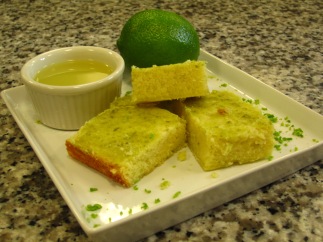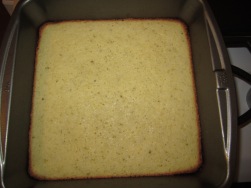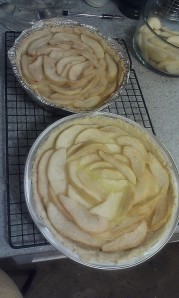 Last August, I was invited to contribute a dessert recipe to Protea Wine’s blog. It was an adaptation of something that had been floating around the Internet for a few weeks, that I’d brought into the office one day to rave reviews. I’d fully intended on posting it here, but then lost track of it…until I just recently stumbled across the image files again.
Last August, I was invited to contribute a dessert recipe to Protea Wine’s blog. It was an adaptation of something that had been floating around the Internet for a few weeks, that I’d brought into the office one day to rave reviews. I’d fully intended on posting it here, but then lost track of it…until I just recently stumbled across the image files again.
The original recipe called these “lemon brownies;” to my taste, the texture is nowhere near a brownie – much more of a moist shortbread. They’re not overpoweringly sweet and the fruit flavor really shines through. It’s another recipe that works quite well with gluten-free baking mixes – in fact, I like the slightly nutty flavor they give. I’ve used oranges, lemons, and limes in these bars, and while I’ve liked them all, the lime version was the hands-down favorite among my co-workers.
 Bars:
Bars:
3/4 cup all-purpose flour or gluten-free flour
3/4 cup granulated sugar
1/4 Tsp salt
1/2 cup (1 stick) unsalted butter, softened – or use salted butter and omit additional salt
2 large eggs
2 Tbsp fresh citrus zest
2 Tbsp citrus juice
Glaze:
2 Tbsp citrus juice
4 Tbsp fresh citrus zest
1/2 cup confectioners’ sugar
Directions:
Preheat oven to 350°. Grease an 8×8 inch baking dish with butter and set aside.
Zest and juice two large lemons or oranges (may require 3-4 limes depending on size) and set aside. You’ll have extra juice left over, and in fact the amount of glaze made is more than generous – try using the extra for dipping fruit or ladyfingers!
Cut dry ingredients into butter until thoroughly combined. In a separate bowl, whisk together the eggs, 2 Tbsp zest, and 2 Tbsp juice. Pour into the flour mixture and beat until smooth and creamy.
Spread in baking dish and bake for 23-25 minutes or until golden around the edges. Do not overbake, or the bars will dry. Allow to cool completely before glazing.
Sift the powdered sugar and whisk with remaining zest and juice. Spread over the bars and let set before cutting. The bars will be delicate – you can cut them while still warm, but make sure they’re completely cool to the center of the pan before attempting to remove them.
Makes a dozen generously-sized bars.

A big hat-tip to Protea Wines for the use of some of the images; see the original post at http://www.proteawinesusa.com/2014/08/wine-and-dessert-pairing/
Adapted from http://www.bestyummyrecipes.com/lemony-lemon-brownies/


